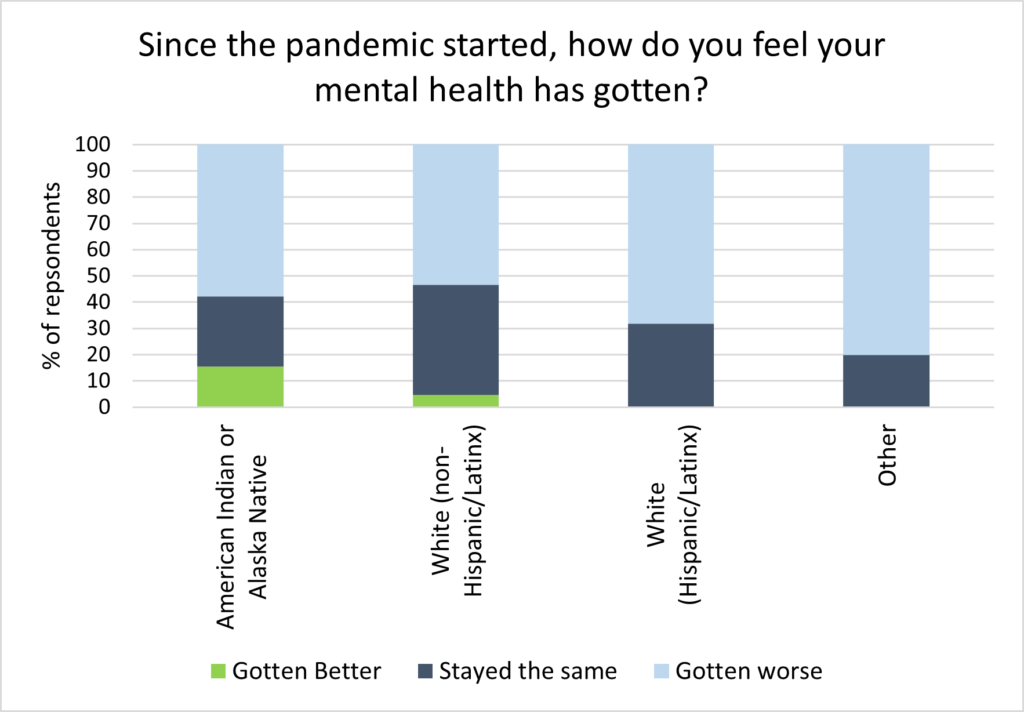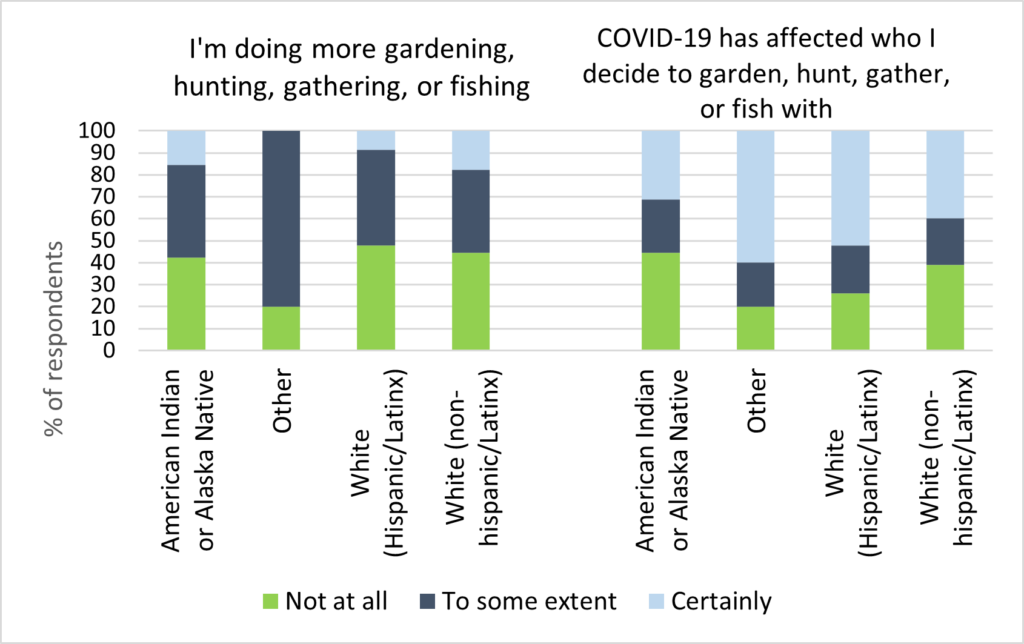
News, Research
News, Research
News, Research
Continuing Research- As the pandemic rages on, some SE Alaskans find opportunities to improve mental health
In late spring of 2020, the Sitka Sound Science Center, in partnership with the Tlingit-Haida Central Council and the RAND Corporation, administered a survey to communities throughout Southeastern (SE) Alaska. Our research objective was to attain local insights on COVID-19 risk perceptions, how SE Alaska communities are adapting and ensuring their resilience, and the potential effects of the pandemic on social, emotional, and economic well-being. Findings from our initial survey wave are here. Since the initial survey wave, between Spring 2020 and Winter 2020/2021, we suspected that due to mass vaccinations and various public commitments to combat COVID-19, risk perceptions among SE Alaskans have shifted. To measure any changes, we conducted a follow-up survey. This survey focused on understanding how attitudes changed as communities accommodated to the reality of COVID-19, accompanied by interviews with tribal citizens in selected communities, to capture vital information needed for community response.

Katherine Rose/KCAW
SE Alaska communities came together to give another great response to the follow-up survey, with 415 survey respondents. Comparing the survey responses from Spring 2020 to Winter 2020/2021, COVID-19 in SE Alaska has led to some significant changes in residents’ lives. Most notably, some Alaska Natives have noted improvements in their mental well-being since the onset of the pandemic.

Since the onset of the pandemic, throughout Summer and Autumn 2020, more SE Alaskans reported engaging in outdoor activities such as gardening, hunting, gathering, and fishing. American Indian and Alaska Native respondents particularly reported an increase in these outdoor activities. Likely to do an effort to ensure physical distancing, most SE Alaskans reported becoming more selective of who they decided to garden, hunt, gather, or fish with. The importance of a diverse and healthy ecosystem was highlighted in SE Alaskans’ desire to flock to the outdoors as COVID-19 continued to spread throughout SE Alaska.

However, unfortunately not all SE Alaskans reported improvements in their mental health. Compared to Alaska Natives, the majority of SE Alaska residents experienced the opposite effect. Our interviews, which are ongoing, seek to better understand this dynamic and draw upon the lessons learned about Alaska Native resilience and opportunities to focus on psychosocial well-being despite living through a pandemic. These lessons of resilience, and critically the toll that the pandemic has taken on the psychosocial well-being of most SE Alaskans, are aimed to inform local policies and guide priorities for public health practitioners.
For any additional questions about other findings from the survey, please contact Alex McCarrel at amccarrel@sitkascience.org at the SSSC.
Keep on the lookout for further insights on how Tlingit-Haida tribal citizens have leveraged traditional and ecological knowledge to adapt to the COVID-19 pandemic.
